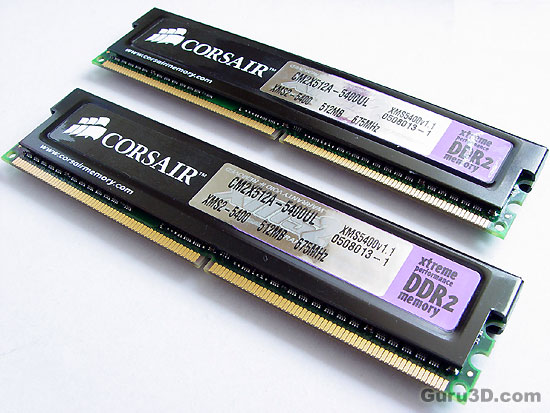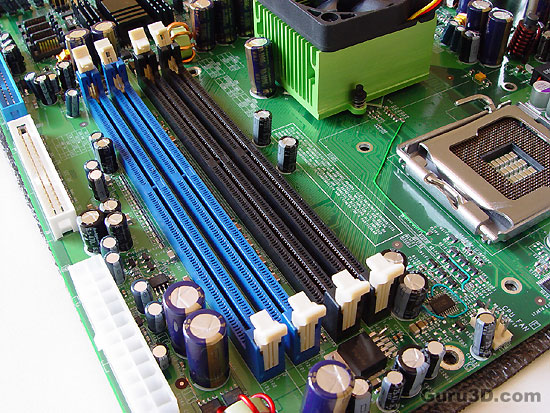Page 3
DDR2 & Memory Controller![]()
Somewhat of a new trend this year will be DDR2 memory. Make no mistake as it has been around for a while now, yet it just doesn't seem to be taking off. The mainboard is equipped with two luxurious bars of Corsair XMS2 5400 DDR2 memory that is capable of achieving 667 MHz datarates, which is standard issue for the nForce4. Intel's solution for example will go up-to 533 MHz. Quite interesting is that the memory controller in theory can manage 1T timings, it's too far fetched to explain this right now though but simply remember this, quicker timings equal better performance. NVIDIA has started a DDR2 validation program. Basically NVIDIA will test DDR2 memory for a manufacturer and after it's approved it'll get the two thumb up.

Corsair XMS2 5400 DDR2 memory, nice!
As some of you might or might not know, an AMD 64 processor has a built in memory controller. Pentium 4 does not have that, meaning NVIDIA had to integrate it into the mainboard chipset. The memory controller of the nForce 4 SLI Intel Edition is however a nice and impressive piece of technology.
We all know that the Pentium 4 craves the need for memory bandwidth to achieve best performance, with that in mind numerous technological advancements have been integrated in order to drive the memory interface at 667 MHz (and higher) data rates to keep up with the bandwidth demands of the Pentium 4 processor. Here are a few of them:
- Asymmetrical and symmetrical interleaving schemes - CPU access is sent concurrently to both channels
- Dedicated (vs. shared) address bus per DIMM - achieves a 1T timing resulting in less latency
- Increased memory bus utilization - burst length of 4 and 1T address timing
- NVIDIA Dynamic Adaptive Speculative Preprocessor 3.0 - data prefetch per core and thread
- NVIDIA QuickSync Technology - reduces latency that occurs when FSB and memory speeds differ
What I like very much is that if you do not have the same specification memory you'll still be able to setup a Dual Channel configuration. So you can actually mix a 512 and 256 MB part and even insert them asynchronously. It's a really nice revamp of all Dual Channel implementations and we see all this because the memory controller had to be designed from scratch. And with that in mind NVIDIA improved it and simply opted a different approach.
Next to all of this goodness I also noticed that NVIDIA Dasp 3.0 was introduced. Dasp is short for Dynamic Adaptive Speculative Preprocessor and guarantees that your Level 1 and level 2 memory cache is running at its optimal level. DASP works by pre-fetching the data for the L1 and L2 cache on the processor, which helps make memory access (Level 3) as quick as possible. It's too technical to go in-depth on this as 90% of you guys (and the 4% girls that visit our site; how you doin'?) right now will go... "yeah right, like I care dude."

The DDR2 memory slots.
